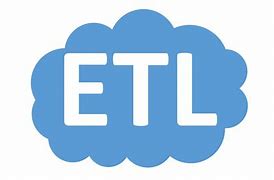
Quite often, while building the Data Integration Pipeline, Performance is a critical factor. The factors below are vital towards following the guidelines while working on ETL processing with Informatica PowerCenter.
The following items are to be considered during ETL DEV.,
- Pre-Requisite Checks/Analysis
- Basic Tuning Guidelines
- Additional Tuning Practices
Tuning Approach
Pre-Requisite Checks/Analysis :
Before we get into subjecting an ETL Mapping against Performance Improvements, below steps to be adopted.,
- Deep Dive into the Mapping to gather Basic Info.
- Complexity of the Mapping (# of SRCs/TGTs, Transformations, Technical Logic)
- Design of the Mapping (End-End Flow, Single/Multiple Pipelines)
- Whether Best Practices followed
- Verify the As-Is Metrics of the Mapping
- Data Volume (SRC/TGT)
- Duration of the Job Completion
- Throughput
- Busy Percentage of the Threads (Reader/Writer/Transformation)
- Collect Performance Statistics
- Ensure the ETL Server/System is not the reason for processing slowness
- Are there frequent Network Connectivity issues?
- Does the ETL System/Server has required H/W Capabilities?
- Does the ETL Metadata DB have Enough Space?
- Whether the System has Accumulated Log/Cache files blocking Server space?
- DBs Slow with READ/WRITE?
After ensuring the above Pre-requisites are taken care and bottlenecks identified, if the ETL DEV is identified as the Root cause for slowness, Tuning practices can be applied on the Mappings if we expect significant improvement to meet the SLAs/Other Business benefits.
Basic Tuning Guidelines
Basic Guidelines are listed below.,
- Design Perspective
- Bring relevant/required fields on subsequent Transformations
- Perform Incremental Extracts to limit Processing
- Use Informatica CDC Drivers to process only Changed Data
- Filter Data as early in the Pipelines
- Limit the Data via Equi-Joins (JNR) upfront before Left-Joins (JNR) on Large Tables
- DB Perspective
- Build Indexes (High Volume Tables on Frequently used Joins/Predicates)
- Create DB Partitions (for Large Fact Tables)
- Collect STATISTICS
- DB performs Faster processing (Complex Transformation Logic) than ETL
- Delegation Perspective
- Use PDO if DB Server has appreciable Computing Abilities
- If DB Server has High Workload, push Functions Logic to Informatica Transformations
- If DB has difficulty with Aggregations/Sorting, use Informatica Transformations
- Space Perspective
- Have a Retention period for Log/Cache files
- Increase SRT/AGG/JNR Cache Size and DTM Buffer Size
- Transformations/Load Perspective
- Sorted Input data before LKP/AGG/JNR Transformations
- JNR with Master Source having Less Records/Distinct Values
- Consider BULK Load/External Loaders for Data Dump (after removing Index)
- Use LKP Persistent Cache for Re-use requirements
- Datatype consistency helps ETL operating with SRT/AGG/JNR
- Optimize LKPs by Looking up only relevant Data (Override Filters) instead of Entire table
- Avoid LKP Override Sort for Small Tables
- Use UPD Strategy Transformation (only if necessary), can go for Session Level Updates
- If LKP on High Volume table causes Performance issue, consider JNR Transformation
Addl. Tuning Practices
Additional Tuning Practices are listed below.,
- Use Informatica Partitions (Pass Through/Key Range/Hash Key etc.) if High Data Volume
- Do not use SRC and TGT as Same DB Table. Do a SRC – File TGT. Then FILE – DB TGT
- Do not perform all ETL Operations in 1 Mapping. Divide ETL works with Series of Mappings
- Use Concurrent Workflow Exec setting to enable parallel loads with different Params
- Process ETL in multiple batches (ex. 2 times a day) to release the Table post load
- If Complex ETL logic causes slowness, use FILE as TGT. Then 1:1 Load from FILE-TGT DB
- Monitor Storage Space (Logs), use ETL Automation to clear files by Frequency (Mly/Qly)
Conclusion
On a high level, below are the inferences.,
- Tuning need not be performed on every ETL mapping. Only those ETL jobs that are pain points to meeting Data Extraction/Loads SLAs be considered as potential candidates for further investigations and tuning.
- DB Query optimization also plays a crucial role with SQL Overrides when used.
- Delegate load b/w DB and ETL Servers.
- Optimize ETL Design by following the Best Practices.
- Monitor Storage Space and Computing Abilities.
- Consider deploying Informatica Nodes on a GRID for High Availability and Load Balancing.



